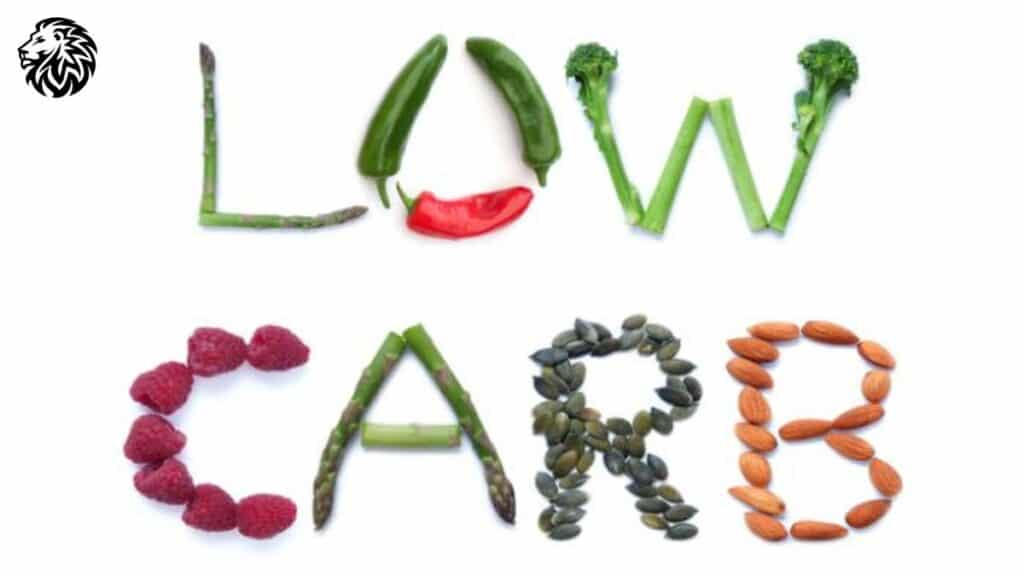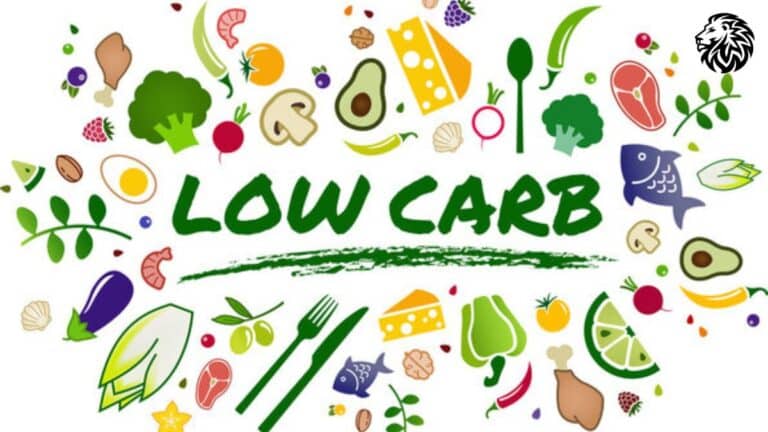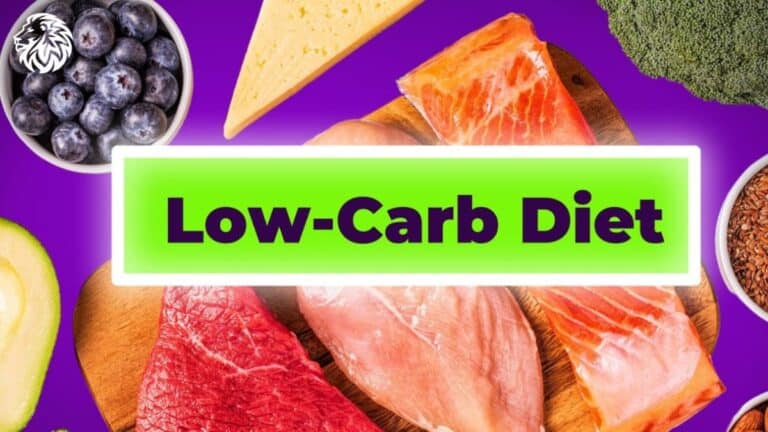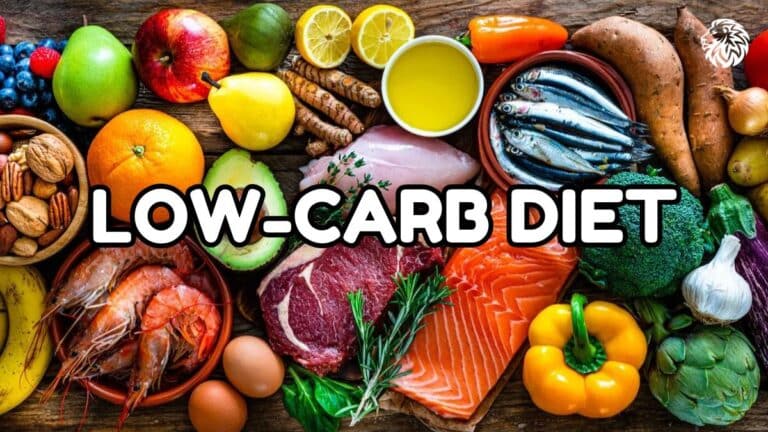A low-carb diet is like a journey to a healthier you, where you take a path less traveled by carbs. Picture this diet as a change in your food landscape: instead of a field of sugary sweets, grains, and starchy delights, you venture into a forest rich with proteins, fats, and a colorful array of non-starchy veggies. It’s like switching your body’s fuel source. By cutting down on carbs, you’re essentially telling your body to start burning the fat it has stored, kind of like switching from electricity to solar power. This switch not only helps in shedding some pounds but also keeps your blood sugar levels more like a calm river rather than a rollercoaster ride, bringing a whole bunch of health perks.
Embracing a low-carb lifestyle can be like unlocking a treasure chest of benefits. You might find yourself losing weight, having better control over your blood sugar, thinking more clearly, and even reducing the risk of heart troubles. It’s like giving your body a new kind of energy drink, making you feel more energetic and overall happier. Remember though, everyone’s body is unique, like a snowflake, so what works wonders for one person might not be the magic potion for another.
This article is your friendly guide to starting a low-carb diet, especially if you’re new to this world. Think of it as your map and compass, showing you what foods are your friends and which ones to steer clear of, and giving you handy tips to make this transition smoother. Whether you’re aiming to boost your health, lose some weight, or just feel better in general, this guide is here to help you step into the low-carb life with confidence and a clear mind.
Understanding Low-Carb Diets

Definition and Main Principles of a Low-Carb Diet
A low-carb diet primarily focuses on reducing the intake of carbohydrates, particularly those found in sugary foods, pasta, and bread. Instead, it emphasizes eating whole, unprocessed foods with a higher proportion of proteins and fats. The main principle behind this diet is to shift the body’s metabolism away from burning carbs for energy towards using fat, a process known as ketosis in stricter low-carb diets. This approach is thought to help control blood sugar levels and promote weight loss.
Different Types of Low-Carb Diets
There are several variations of low-carb diets, each with its unique approach:
- Ketogenic (Keto) Diet: This is a very low-carb, high-fat diet. It typically involves consuming less than 50 grams of carbs per day to reach a state of ketosis.
- Atkins Diet: This diet involves a low-carb intake with a focus on protein and fat. It starts with a very low carbohydrate phase and gradually increases carb intake.
- Paleo Diet: While not low-carb by definition, the Paleo diet often results in lower carb consumption. It focuses on eating foods that were presumably available to Paleolithic humans, such as meats, fish, nuts, leafy greens, and seeds.
- Low-Carb Mediterranean Diet: This combines the traditional Mediterranean diet’s emphasis on vegetables and healthy fats with lower carb intake.
Health Benefits and Potential Risks
Health Benefits:
- Weight Loss: Many people find low-carb diets effective for weight loss, as reduced carb intake can lead to a natural reduction in appetite.
- Improved Blood Sugar Control: Low-carb diets can be particularly beneficial for people with diabetes or insulin resistance.
- Heart Health: Some studies suggest a low-carb diet can improve heart health markers, such as cholesterol and blood pressure levels.
Potential Risks:
- Nutritional Deficiencies: Without careful planning, one might miss out on essential nutrients typically found in carb-rich foods like whole grains and fruits.
- Keto Flu: Initially, transitioning to a very low-carb diet like Keto can lead to flu-like symptoms, including headaches, fatigue, and irritability.
- Long-term Health Effects: There is ongoing debate about the long-term health impacts of severely restricting carbs, especially with regard to heart health.
Understanding these aspects is crucial for anyone considering a low-carb diet, as it helps in making informed decisions and finding a diet plan that aligns with individual health goals and lifestyle.
Preparing for a Low-Carb Diet

Assessing Your Current Eating Habits
Before starting a low-carb diet, it’s important to have a clear understanding of your current eating habits. This assessment involves tracking your daily food intake for a week, noting everything you eat and drink. Pay special attention to foods high in carbohydrates, such as bread, pasta, rice, sugary snacks, and fruits. This exercise will not only highlight your carb-heavy food choices but also help you identify areas where you can make healthier substitutions.
Setting Realistic Goals
Goal setting is a critical step in embarking on a low-carb diet. These goals should be specific, measurable, achievable, relevant, and time-bound (SMART). For instance, a goal might be to reduce your carb intake to under 100 grams per day for a month or to lose a specific amount of weight within a certain period. It’s important to set realistic goals that align with your lifestyle and dietary preferences. Remember, the aim is to create sustainable changes rather than pursuing drastic alterations that are hard to maintain.
Consulting with a Healthcare Professional or Dietitian
Consulting with a healthcare professional or a registered dietitian is an essential step, especially if you have pre-existing health conditions like diabetes, heart disease, or high blood pressure. A healthcare professional can provide personalized advice, help you understand how a low-carb diet may impact any medical conditions, and ensure that your diet plan is nutritionally balanced. A dietitian can also assist in creating a meal plan that suits your taste preferences, lifestyle, and nutritional needs, making the transition to a low-carb diet safer and more effective.
The Basics of Starting a Low-Carb Diet

Foods to Eat: Emphasizing Proteins, Healthy Fats, and Low-Carb Vegetables
When embarking on a low-carb diet, your food choices should pivot towards:
- Proteins: Include a variety of meats (beef, pork, lamb, chicken, turkey), fish (salmon, trout, mackerel), and eggs. Plant-based protein sources like tofu and tempeh are also good options.
- Healthy Fats: Focus on sources of unsaturated fats, such as avocados, nuts (almonds, walnuts, macadamias), seeds (flaxseeds, chia seeds), and oils like olive oil, coconut oil, and avocado oil.
- Low-Carb Vegetables: Fill your plate with vegetables that are low in carbs but high in nutrients, such as leafy greens (spinach, kale, arugula), cruciferous vegetables (broccoli, cauliflower, Brussels sprouts), and others like zucchini, bell peppers, and asparagus.
Foods to Avoid: High-Carb Foods like Sugars, Grains, and Starchy Vegetables
To maintain a low-carb diet, it’s crucial to limit:
- Sugary Foods: Avoid soft drinks, fruit juices, candies, ice cream, and other sugary snacks.
- Grains: Bread, pasta, rice, cereals, and other grain-based products should be limited or avoided.
- Starchy Vegetables: Potatoes, sweet potatoes, corn, and other high-starch vegetables are high in carbs.
- Legumes: Some legumes like beans and lentils are high in carbs and should be consumed in moderation depending on your carb target.
Reading Food Labels and Understanding Net Carbs
Understanding food labels is key to managing your carb intake. Pay attention to the total carbohydrates, which include sugars, fiber, and starches. To calculate net carbs, subtract the grams of fiber (and sometimes sugar alcohols) from the total grams of carbohydrates. For example, if a food has 20 grams of total carbs and 5 grams of fiber, the net carbs would be 15 grams. Net carbs are a more accurate reflection of the carbohydrates that have an impact on blood sugar levels. This knowledge is particularly important for packaged foods, where hidden sugars and starches can be present.
Practical Tips for an Easy Transition

Gradually Reducing Carb Intake
For many, a gradual reduction in carb intake can make the transition to a low-carb diet more manageable and sustainable. Here’s how to approach it:
- Start by Cutting Out Obvious Sources: Begin by eliminating obvious high-carb foods like bread, pasta, rice, and sugary snacks.
- Reduce Portions: Slowly reduce the portion size of carb-containing foods in your meals.
- Incremental Changes: Each week, make small adjustments to further lower your carb intake, allowing your body and taste preferences to adapt smoothly.
Meal Planning and Preparation
Effective meal planning and preparation are key to staying on track with a low-carb diet:
- Plan Your Meals in Advance: Write down your meals for the week. This helps in shopping for the right ingredients and avoids the temptation of high-carb options.
- Prep Meals in Bulk: Cook meals in bulk and store them in the fridge or freezer. This ensures that you have low-carb meals ready when you’re short on time or energy.
- Include Variety: To avoid dietary boredom, include a variety of foods in your meal plan. Experiment with different proteins, vegetables, and fats.
Low-Carb Swaps for Common High-Carb Foods
Making simple swaps can significantly reduce your carb intake without sacrificing flavor:
- Rice Alternatives: Use cauliflower rice or broccoli rice instead of regular rice.
- Pasta Alternatives: Opt for spiralized vegetables like zucchini noodles (zoodles) or spaghetti squash.
- Bread Alternatives: Try lettuce wraps, low-carb tortillas, or make your own bread with almond or coconut flour.
- Sugar Alternatives: Use sweeteners like stevia, erythritol, or monk fruit in place of sugar.
- Snack Alternatives: Replace chips and crackers with nuts, cheese, or low-carb vegetables like cucumber and bell peppers.
Incorporating these practical tips into your daily routine can make starting and maintaining a low-carb diet a more enjoyable and successful experience.
Overcoming Common Challenges

Dealing with Initial Side Effects (e.g., the “Keto Flu”)
When starting a low-carb diet, especially a ketogenic diet, some people may experience symptoms like fatigue, headache, irritability, and nausea, often referred to as the “keto flu.” These symptoms typically arise as the body adjusts to burning fat instead of carbs for energy. To mitigate these effects:
- Stay Hydrated: Increase your water intake.
- Replenish Electrolytes: Ensure adequate intake of sodium, potassium, and magnesium.
- Eat Enough Fat and Calories: Don’t reduce calories too much; ensure you’re getting enough healthy fats to provide energy.
- Get Adequate Rest: Make sure you’re getting enough sleep to help your body adjust.
- Start Slowly: Gradually reducing carbs can help lessen the intensity of these symptoms.
Dining Out and Social Events
Navigating dining out and social events on a low-carb diet can be challenging, but it’s certainly manageable:
- Check Menus in Advance: Look at the menu online before going to a restaurant and plan what you will order.
- Communicate Your Needs: Don’t hesitate to ask for modifications to your meal, such as swapping out starchy sides for extra vegetables.
- Focus on Protein and Vegetables: Choose dishes centered around protein and non-starchy vegetables.
- Avoid Sugary Drinks: Stick to water, unsweetened tea, or coffee.
- Bring Your Own Dish: When attending a social event, consider bringing a low-carb dish to share.
Managing Cravings and Hunger
Cravings and hunger can be significant hurdles in the initial stages of a low-carb diet:
- Eat Regularly: Don’t wait until you’re overly hungry. Regular, balanced meals can prevent intense cravings.
- Healthy Snacks: Keep low-carb snacks handy for when cravings strike.
- Find Healthy Substitutes: Satisfy cravings with low-carb alternatives (e.g., berries for a sweet craving, nuts for crunchy snacks).
- Stay Hydrated: Sometimes thirst is mistaken for hunger. Drink water throughout the day.
- Mindful Eating: Eat slowly and without distractions to help recognize when you’re full.
By anticipating and preparing for these challenges, you can navigate them more effectively and stay committed to your low-carb lifestyle.
Sustaining a Low-Carb Lifestyle

Developing Long-term Habits
- Consistency is Key: Make your low-carb choices a regular part of your daily routine. Consistency over time leads to lasting habits.
- Plan Ahead: Continuously plan your meals and snacks to avoid impulsive eating decisions.
- Stay Informed: Keep educating yourself about low-carb living to stay motivated and informed about new recipes and strategies.
- Track Progress: Monitor your progress not just in terms of weight loss, but also how you feel in terms of energy, sleep quality, and overall well-being.
- Be Flexible: Understand that it’s okay to have occasional setbacks. The key is to get back on track without guilt.
Adjusting the Diet to Fit Your Lifestyle and Preferences
- Personalization: Tailor your diet according to your personal taste preferences, health goals, and lifestyle.
- Balance and Variety: Ensure your diet includes a variety of foods to provide essential nutrients and keep meals interesting.
- Listen to Your Body: Pay attention to how your body responds to different foods and adjust accordingly.
- Incorporate Physical Activity: A balanced lifestyle includes regular physical activity, which complements the benefits of a low-carb diet.
When and How to Reintroduce Carbs Responsibly
- Gradual Introduction: If you decide to reintroduce carbs, do it gradually to avoid overwhelming your system.
- Choose High-Quality Carbs: Opt for whole, unprocessed carbohydrates like whole grains, legumes, fruits, and vegetables.
- Monitor Your Response: Pay attention to how your body responds to reintroducing carbs, particularly if you have blood sugar concerns.
- Balance is Essential: Incorporate carbs in a balanced way that doesn’t undermine your health goals.
- Continuous Adjustment: Be prepared to adjust your carb intake based on your health markers, energy levels, and overall well-being.
Maintaining a low-carb lifestyle over the long term involves creating sustainable habits, tailoring the diet to your individual needs, and understanding how to responsibly reintroduce carbohydrates if desired. With these strategies, you can make low-carb eating a permanent and enjoyable part of your life.
Conclusion
Recap of the Key Steps to Starting a Low-Carb Diet
In this guide, we’ve outlined the essential steps to successfully embark on a low-carb diet:
- Understanding Low-Carb Diets: Familiarize yourself with what low-carb diets entail, including the different types and their health benefits.
- Preparation: Assess your current eating habits, set realistic goals, and consult with healthcare professionals.
- The Basics: Learn about the foods to embrace and those to avoid, and understand the importance of reading food labels and calculating net carbs.
- Transition Tips: Implement strategies such as gradually reducing carb intake, planning and preparing your meals, and finding low-carb alternatives for your favorite high-carb foods.
- Overcoming Challenges: Prepare for initial side effects, learn how to handle dining out and social events, and manage cravings effectively.
- Sustaining the Lifestyle: Develop long-term habits, tailor your diet to your lifestyle, and understand how to reintroduce carbs responsibly if you choose to do so.
Encouragement for Readers to Embark on Their Low-Carb Journey
Embarking on a low-carb diet can be a transformative journey, leading not only to weight loss but also to improved overall health and well-being. It’s a path that requires commitment, learning, and adjustment, but the rewards can be profound and lasting.
Remember, every journey begins with a single step. Whether your goal is to lose weight, improve your health, or simply feel better in your daily life, a low-carb diet can be a valuable and effective tool. With the right preparation and mindset, you can make this transition smoothly and sustainably.
We encourage you to embrace this journey with an open mind and a commitment to your health. You’re not just changing your diet; you’re taking a significant step towards a healthier, more vibrant you. Here’s to your success on your low-carb journey!
Frequently Asked Questions
1. Can I still eat fruit on a low-carb diet?
Yes, you can eat fruit on a low-carb diet, but it’s important to choose fruits that are lower in carbs. Berries like strawberries, raspberries, and blueberries are good options as they have fewer carbs compared to fruits like bananas and grapes. Moderation is key, so include them in your diet in controlled portions.
2. How quickly can I expect to lose weight on a low-carb diet?
Weight loss on a low-carb diet can vary from person to person. Some may see rapid weight loss initially, especially in the first few weeks, as the body sheds water weight. However, a more sustainable and healthy rate of weight loss is typically 1-2 pounds per week. Remember, factors like age, gender, activity level, and overall health also influence weight loss.
3. Is it safe to follow a low-carb diet if I have diabetes?
A low-carb diet can be beneficial for people with diabetes as it can help control blood sugar levels. However, it’s crucial for individuals with diabetes, especially those on insulin or other blood sugar-lowering medications, to consult with their healthcare provider before starting a low-carb diet to adjust medication doses and monitor blood sugar levels closely.
4. Are there any risks associated with a low-carb diet?
While a low-carb diet can offer several health benefits, it may also pose risks if not followed correctly. Potential risks include nutrient deficiencies, particularly if the diet lacks variety, and issues like constipation due to reduced fiber intake. In some cases, people might experience increased cholesterol levels. Therefore, it’s advisable to consult with a healthcare professional before starting a low-carb diet.
5. Can I ever eat carbs again if I start a low-carb diet?
Yes, you can reintroduce carbs back into your diet. The key is to do it gradually and choose high-quality, nutrient-dense carbohydrate sources like whole grains, legumes, and starchy vegetables. The reintroduction should be tailored to your body’s response and your overall health goals, ensuring that you maintain the benefits you’ve gained from the low-carb phase.







